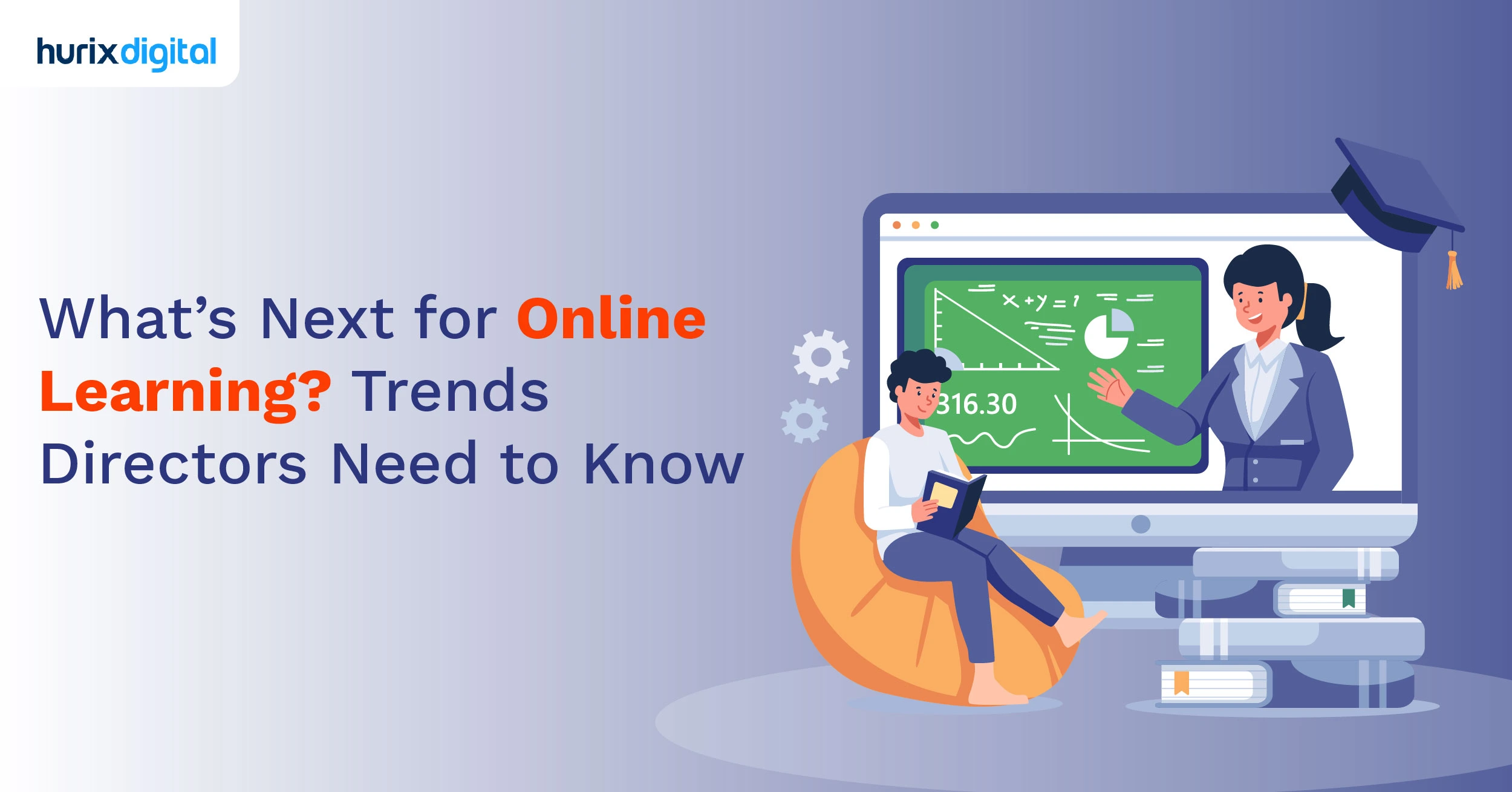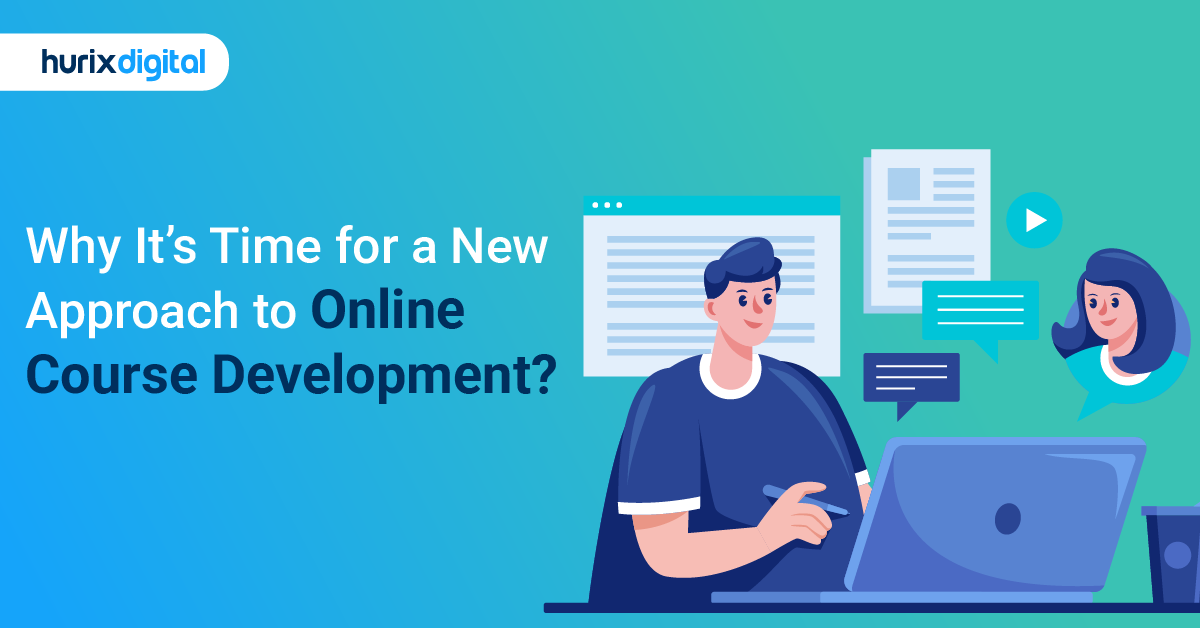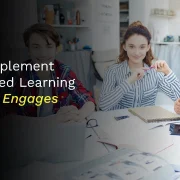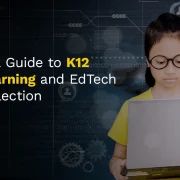
Learning in the Times of COVID-19 – How to Develop Your Online Learning Material
The novel Coronavirus outbreak is disrupting the ‘normal’ way of life the world over, and its ripples are being felt in the education sector as well. Be it in COVID-19 hotspots such as US, China, Italy and Spain or countries grappling with secondary waves of transmission, a vast majority of educational institutions are shuttered. The situation means that the need to diversify means of learning is more pressing now than ever.
In the US, universities are shifting to an online model of teaching and learning. The online learning material needs to be focused, crisp and interactive, so as to provide an engaging learning experience to students. How do institutions shift to online learning with the right content approach?
Stages of Online Course Development
Even though e-learning modules can vary greatly in their content, form, model and approach based on the subject matter and the audience they’re catering to, the basic process of online course development remains the same. This process, comprising the following seven stages, needs to be followed precisely to ensure that the online learning material delivers on the desired results:
1. Analyzing the Content
The analysis is the foundation on which solid online learning material and e-learning modules rest. You should set out by analyzing the profiles of your target audience and the end goal of the training/teaching program as well as the available content material.
The key is to have a grip on what you and your students seek to accomplish through an online learning module. This, in turn, helps in the creation of a well-rounded instructional strategy supported by an engaging presentation of the course material.
Also Read: 6 Reasons Why E-Learning is Replacing Traditional Higher Education Courses
2. Creating the Instructional Design Document
The Instructional Design Document, or IDD, as it is called by the eLearning experts, is a detailed plan encompassing every element of the course material from an instructional standpoint.
It is at this stage that you’ll take important decisions on presentation of the course material – will you break down the course into modules or present them on screens? Will there be different formats for a single course? What about customized learning? And gamification? These are just some of the variables that need to be addressed with concrete answers. If you are creating online course material for different subjects, each one of these will require a unique IDD.
3. Generating Online Course Material
At this stage, the content to be included in different e-learning courses is finalized and broken up into smaller bits, as per your preferred model, for better comprehension and retention. For instance, if you are using modules for your online course material, the content is broken down accordingly. Alternatively, if you are using screens, the content placement for each screen is finalized.
4. Developing Prototypes
Once a basic structure of the online course material is finalized, the work of building a prototype begins. At this stage, the entire course material is squeezed into a few slides, and the elements of written, visual, and audio format are finalized. This is also where every detail pertaining to the presentation of the content – from fonts to color, images, videos, animations, and tasks – is locked and sealed.
This process of the course development process can often get stretched out, as educators and content developers tend to go back and forth a lot, writing, revising, and rewriting different elements until that perfectly harmonious combination is achieved. The prototype is then tested on your chosen content management system for e-learning to gauge its effectiveness.
5. Creating Course Material Sans Audio
All the elements of the course material, except the audio script, are put together at this stage. From text to visuals such as images and videos, as well as interactive elements, are strung together in sequence. Your online course material is now starting to take shape. This version is then submitted for a review to all stakeholders.
6. Adding in the Audio
After the stakeholders give the go-ahead for the online course material, the process of adding audio to it begins. This process is held off right until the end because creating audio files can be extremely cost-intensive.
So, the recording of audio voiceovers begins only after the script has been finalized. The audio is then developed in tandem with the text and visual elements of the course material. There has to be perfect harmony between the two, and the pronunciation, diction, and voice modulation have to be perfect.
7. Launching the Learning Management System Version
All of the above stages of developing online course material are of a creative nature. However, in the last leg of the process, things get a tad more technical. The online course that you have developed now needs to be adapted into a Learning Management System version. All stakeholders must be invested in reviewing the material and double-checking compliances to ensure that once released online, the course has a smooth run on the chosen Learning Management System.
And that’s that. Your course is ready to go live.
Guide:
How to Choose the Right LMS for your Needs
Partner Up
Online course development is an intricate process, and one that can be extremely overwhelming for beginners. Besides the effectiveness of the online course material, you also need to factor in the dynamics of cost and timelines. After all, it would be an exercise in futility if the course material that was meant to see students through an entire semester is released after the session is underway or half-way through.
In addition, roping in a team of experts who can take care of the myriad different elements of the online course – graphics, visuals, audio, tech support, to name a few – can cost a fortune.
That’s why it bodes well for educational institutions to leverage the expertise of third-party vendors like Hurix to see them through the process of course development for their e-learning initiatives. The proposition becomes even more appealing in the present scenario when Ed-tech companies are lining up to help colleges, universities, and other institutions in taking their courses and programs online.
Get in touch with us today!
Related:
- Online Learning Courses – The New Reality for Institutions and Students
- Digital Solutions for Universities and Higher Education Institutions
- 9 Reasons for the Growth of eLearning in Education
- Why Should Colleges and Universities Develop eLearning Programs?
- How Can Institutions Improve their Higher Education Course Enrolment
- Best eLearning Solutions for Digital Natives
- How to Create and Deliver the Best K-12 Learning Solutions

Senior Vice President
A Business Development professional with >20 years of experience with strong capability to sell new solutions and develop new markets from scratch. New Market Entry Specialist with experience working in the largest emerging markets. Exceptional experience in conceptualizing, ideating and selling new learning technologies like VR AR, etc. across multiple industry verticals.








